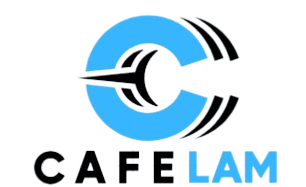In an era where digital content fuels nearly every business operation — from marketing campaigns and product development to training and customer service — organizations are grappling with a growing mountain of media assets. Images, videos, presentations, audio files, branding materials, and documents are created and shared across teams, platforms, and continents at an unprecedented scale. Managing all of this content efficiently, securely, and strategically is no longer optional. It’s mission-critical. Enter Enterprise DAM — a powerful solution for managing digital assets at scale.
Enterprise DAM, or Enterprise Digital Asset Management, is not just a technology; it’s a foundational system that empowers organizations to take full control of their content operations. In this article, we will explore what Enterprise DAM is, why it’s essential, how it works, the features to look for, industry use cases, and what the future holds for digital asset management on an enterprise level.
What Is Enterprise DAM?
Enterprise DAM refers to a large-scale, centralized platform designed to organize, store, manage, distribute, and retrieve digital assets across an entire organization. Unlike standard DAM systems that may cater to small teams or specific departments, Enterprise DAM is built for the complexity and scale of large businesses, global brands, media organizations, and corporations with diverse teams, channels, and content needs.
The system acts as a single source of truth for all digital media files, ensuring that every team — from marketing and sales to product and HR — works from the most accurate, up-to-date, and approved versions of content.
Why Enterprise DAM Is More Important Than Ever
As we move deeper into the digital-first business landscape of 2025, the challenges of managing digital assets have become more intense:
- Content Explosion: The sheer volume of content produced daily is staggering. Without a system, chaos quickly follows.
- Remote Collaboration: Global, hybrid, and remote work models require accessible and secure cloud-based solutions.
- Brand Consistency: Maintaining a consistent brand voice and identity across campaigns and platforms is critical for customer trust.
- Legal and Compliance Requirements: With regulations like GDPR, copyright, and licensing issues, proper tracking of asset usage is essential.
- Speed to Market: Marketing and creative teams are under pressure to produce and publish content faster than ever.
Enterprise DAM addresses all these concerns by streamlining workflows, protecting brand assets, enhancing compliance, and driving business agility.
Core Features of an Enterprise DAM System
Enterprise DAM platforms are loaded with advanced features that cater to large-scale operations. Here are the core functionalities that define a robust system:
1. Centralized Asset Repository
A secure, cloud-based hub that stores all types of digital files — from images and videos to PDFs and design files — in one accessible location.
2. Advanced Metadata and AI Tagging
Assets are tagged with rich metadata (descriptive, technical, usage rights, etc.), making search and categorization easy. AI and machine learning automate tagging based on object recognition, speech-to-text, and contextual analysis.
3. Smart Search and Filtering
Powerful search tools allow users to find assets using filters like keyword, file type, campaign name, date, or usage status — dramatically reducing time spent locating files.
4. Version Control and Audit Trails
Track every version of an asset and maintain a full history of edits, changes, and approvals. This ensures transparency and helps avoid using outdated materials.
5. Access Control and User Permissions
Set custom roles and permissions to control who can access, edit, download, or share assets. This is critical for maintaining security and protecting sensitive content.
6. Workflow Automation
Streamline content approvals, reviews, feedback, and publishing with built-in workflow tools that connect creative, legal, and marketing teams.
7. Integration with Key Tools
Enterprise DAM integrates with software such as Adobe Creative Cloud, Microsoft 365, CMS systems, e-commerce platforms, project management tools, and marketing automation platforms.
8. Rights Management and Expiry Controls
Track license usage, asset expiration dates, and geographic or platform restrictions to ensure legal compliance and avoid copyright infringements.
9. Analytics and Reporting
Gain insights into asset usage, performance, and user engagement. Identify which assets drive results and optimize content strategies accordingly.
10. Scalability and Reliability
Enterprise DAM platforms are designed to handle millions of assets, high user concurrency, and global access — all while maintaining uptime and performance.
Benefits of Using Enterprise DAM
Implementing a comprehensive DAM system at the enterprise level offers transformative benefits across the organization:
1. Improved Efficiency and Productivity
Employees spend less time searching for content and more time creating, strategizing, and executing. Studies show DAM systems can reduce search time by up to 85%.
2. Enhanced Brand Governance
By ensuring that only approved and on-brand assets are used, organizations can maintain consistent messaging and branding across all channels and touchpoints.
3. Faster Time to Market
With streamlined collaboration and content workflows, marketing teams can launch campaigns more quickly and adapt to market demands in real-time.
4. Reduced Costs
Avoid duplicating work or recreating lost assets. A DAM system reduces redundant creation efforts and associated costs.
5. Compliance and Risk Management
Maintain better control over digital rights, licensing, and legal usage of assets, reducing the risk of lawsuits and penalties.
6. Cross-Departmental Collaboration
Sales, marketing, product, and design teams can collaborate in real-time, regardless of their location, using the same assets and updates.
Who Needs an Enterprise DAM?
Enterprise DAM solutions are ideal for organizations with complex, multi-departmental content needs. Industries that benefit most include:
1. Retail and E-commerce
Retailers manage massive volumes of product photos, promotional videos, banners, and seasonal campaign materials. A DAM ensures consistent branding across websites, marketplaces, and ads.
2. Media and Entertainment
These companies juggle massive libraries of video, music, promotional content, and metadata. Enterprise DAM supports media lifecycle management and global distribution.
3. Manufacturing
Manufacturers use DAM for organizing product imagery, technical diagrams, spec sheets, manuals, and training videos across global teams and partners.
4. Healthcare and Pharma
With a need for secure, compliant systems, Enterprise DAM supports managing educational materials, branding, internal communications, and clinical media.
5. Higher Education
Universities and institutions manage event photography, promotional videos, research presentations, and course materials, all needing centralized control.
6. Government and Public Sector
Agencies need DAMs for archiving historical content, public communication materials, and secure document handling.
Integrations: Making Enterprise DAM Part of the Digital Ecosystem
A major advantage of modern DAM systems is their ability to integrate into existing digital ecosystems. Enterprise DAM platforms commonly connect with:
- Content Management Systems (CMS): WordPress, Drupal, Sitecore
- Design Tools: Adobe Creative Cloud, Figma, Canva
- Product Information Management (PIM) platforms
- Marketing Automation: HubSpot, Marketo, Salesforce
- Project Management Tools: Asana, Monday.com, Trello
- E-commerce Platforms: Shopify, Magento, WooCommerce
- Video Platforms: YouTube, Vimeo, Brightcove
- CDNs and Cloud Storage: AWS, Azure, Google Cloud
These integrations enable automated publishing, faster content updates, and smooth creative-to-marketing pipelines.
Future of Enterprise DAM: Trends to Watch
Enterprise DAM is evolving rapidly to meet the growing complexity of digital content strategies. Here are some emerging trends shaping its future:
1. AI-Driven Content Recommendations
DAM platforms will use AI to recommend assets based on usage patterns, campaigns, audience engagement, and performance metrics.
2. Dynamic Content Delivery
Smart delivery of assets optimized in real-time for device type, user location, or channel (email, web, mobile).
3. 3D Asset Management
With growing interest in AR/VR and 3D content, DAMs are beginning to support management and preview of 3D models.
4. Headless DAM
Separation of content management and presentation layers allows flexible delivery to any front-end, ideal for omnichannel strategies.
5. Personalization at Scale
DAMs will increasingly integrate with customer data platforms (CDPs) to deliver tailored content experiences based on customer behavior.
6. Sustainability Tracking
Organizations will track the carbon footprint of content production and distribution through DAM tools — aligning digital strategies with sustainability goals.
How to Choose the Right Enterprise DAM
Selecting the right platform depends on your organization’s size, goals, budget, and tech stack. Here are key considerations:
- Scalability – Can it handle your current and future asset volume?
- User Experience – Is the interface intuitive for all users?
- Integration Capabilities – Does it connect with your existing tools?
- Customization and Flexibility – Can workflows and metadata be tailored?
- Security and Compliance – Does it offer encryption, access control, and regulatory compliance?
- Vendor Support and Training – Is there onboarding, training, and responsive support?
- Cost and ROI – What’s the pricing model? Consider user seats, storage, and features.
Leading Enterprise DAM Providers
Here are some top enterprise-level DAM vendors recognized in the market today:
- Adobe Experience Manager Assets
- Bynder
- Widen Collective (Acquia)
- Brandfolder
- Aprimo
- MediaValet
- Canto
- Cloudinary
Each offers unique strengths — whether it’s seamless Adobe integration, intuitive UX, AI-powered automation, or scalability for global teams.
Conclusion
Enterprise DAM is no longer a back-office tool — it’s a strategic powerhouse at the center of digital transformation. By investing in a robust Enterprise DAM system, organizations can not only manage their digital content more efficiently but also drive innovation, collaboration, and customer engagement at scale.
In a world that runs on content, Enterprise DAM ensures you’re not just keeping up — you’re leading the way.







